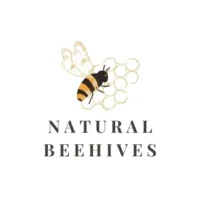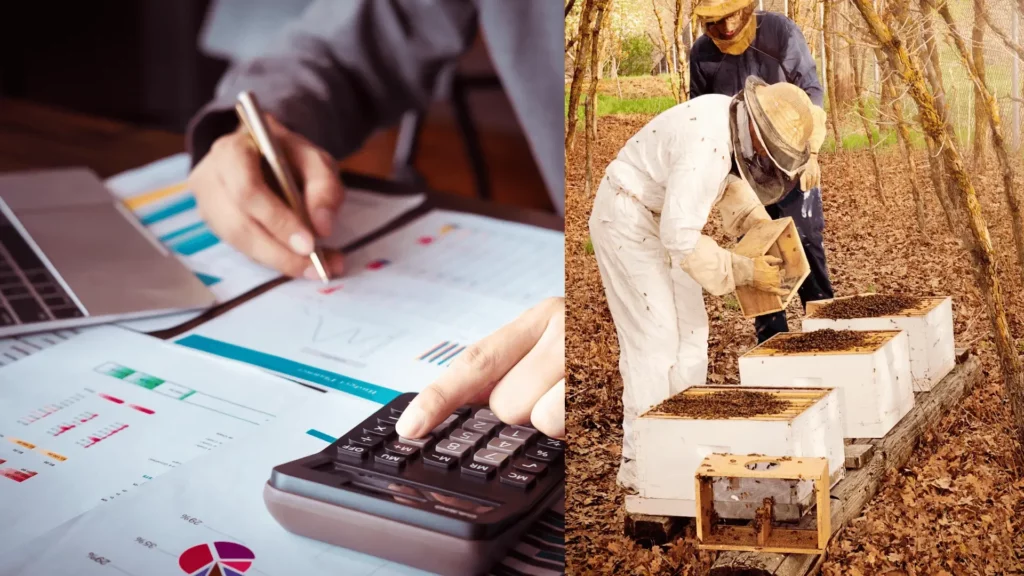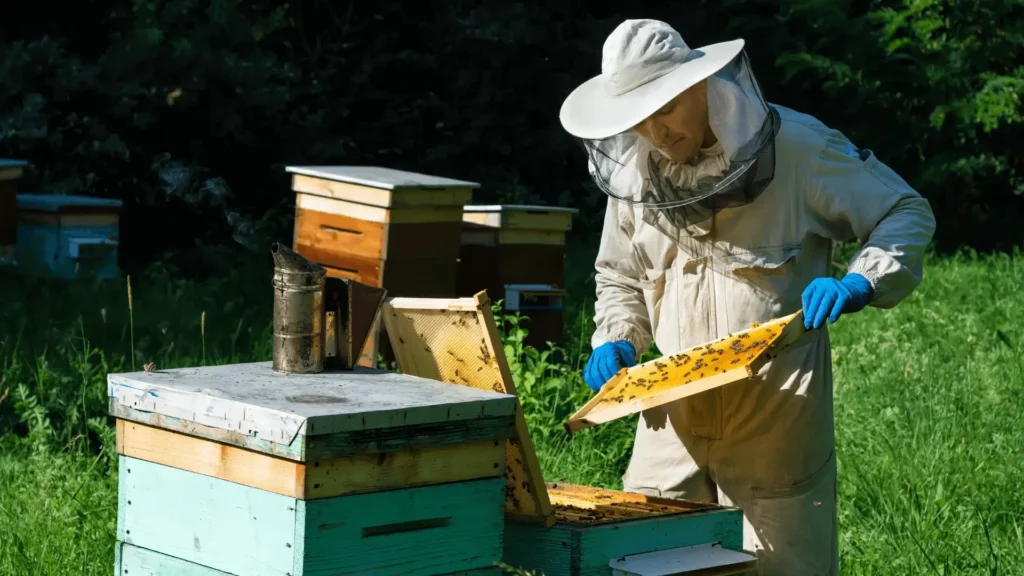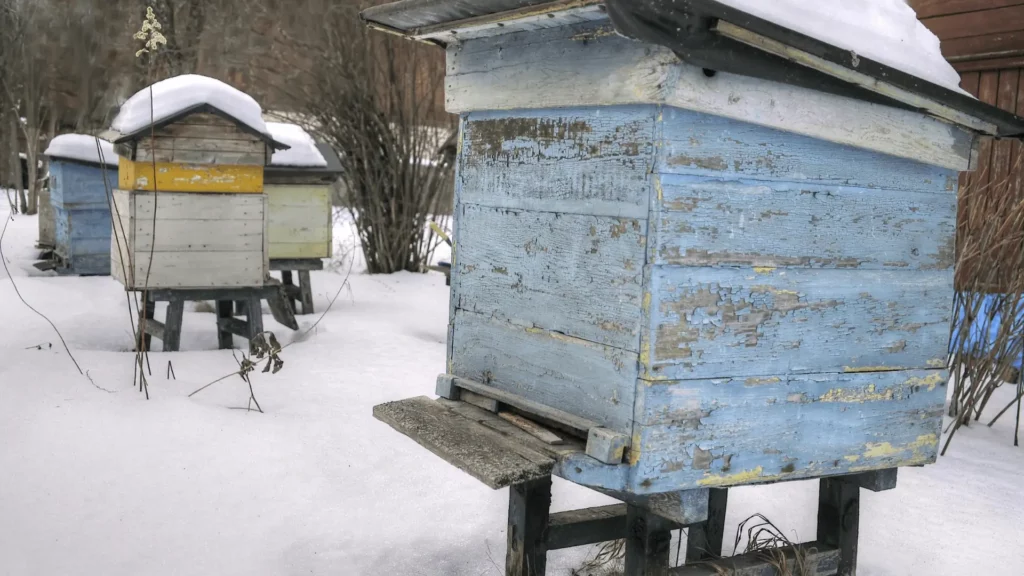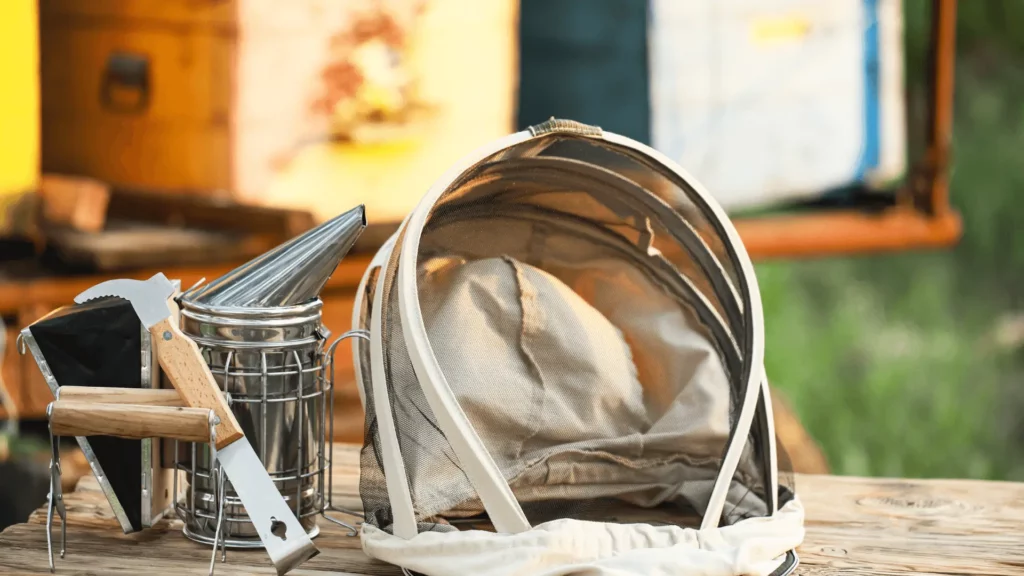
Getting started with beekeeping can be overwhelming, but fear not! Our comprehensive guide will equip you with the knowledge and resources necessary to dive into this fascinating hobby with confidence. From hive boxes and frames to protective clothing and tools, we’ll explore all the essential supplies that should be included in a beekeeping starter kit.
Whether you’re a beginner beekeeper seeking guidance on necessary equipment or a curious soul looking for tips and advice, we’ve got you covered. Keep reading to discover the ultimate beekeeping starter kit to kick-start your buzzing adventure.
The Importance of a Comprehensive Beekeeping Starter Kit
Starting out in beekeeping can be an exciting and rewarding venture, but it can also feel overwhelming, especially for beginners. That’s why having a comprehensive beekeeping starter kit is crucial for setting yourself up for success. By investing in a well-equipped kit, you’ll have all the necessary supplies and equipment at your fingertips, making the learning process smoother and more enjoyable.
A comprehensive beekeeping starter kit includes everything you need to establish and maintain a healthy hive. It typically includes hive boxes, frames, foundation, hive tools, protective clothing, and more. These items are carefully selected to ensure you have the essential components needed to get started on the right foot.
Having the right tools and equipment not only simplifies the beekeeping process but also ensures the well-being of your bees and the overall success of your colony. With a well-equipped starter kit, you’ll have the confidence and peace of mind knowing that you’re prepared to address the needs of your bees throughout their lifecycle.
Investing in a comprehensive beekeeping starter kit is not only convenient, but it also saves you time and effort in sourcing individual items separately. Additionally, it provides you with a cost-effective option compared to purchasing items individually.
In the following sections, we will explore the essential beekeeping supplies that should be included in a starter kit, budget-friendly options to consider, and practical tips for beginners embarking on their beekeeping journey. So let’s dive in and discover how a comprehensive starter kit can help you kickstart your beekeeping adventure with confidence.
Essential Beekeeping Supplies: What Should Be Included
When starting your beekeeping journey, having the right supplies and equipment is crucial for your success. A comprehensive beekeeping starter kit should include everything you need to set up and maintain your hive. Here are the essential supplies that should be included in a beekeeping starter kit:
Hive Boxes and Frames
Hive boxes, also known as supers, are the foundation of your beekeeping setup. These boxes serve as homes for your bees and provide space for them to build their comb and store honey. A beginner’s beekeeping starter kit should include at least one hive box, preferably multiple boxes to accommodate hive expansion. Along with hive boxes, frames are essential. Frames are placed inside the hive boxes and serve as the structure on which bees build their combs.
Foundation
Foundation is a thin sheet made of wax or plastic that is placed within each frame. It provides bees with a guide for building their comb in a straight and uniform manner. Ensure that your beekeeping starter kit includes foundation sheets that align with the size of the frames included.
Protective Clothing
Beekeeping can be an adventurous endeavor, but it’s important to protect yourself from stings. A beekeeping starter kit should include protective clothing such as a beekeeping suit or jacket, gloves, and a veil. These items will shield you from bee stings and keep you safe during hive inspections and honey extraction.
Hive Tools
Hive tools are indispensable for beekeepers. These specialized tools help you pry apart hive boxes, lift frames, scrape off excess propolis, and perform other essential tasks. A beekeeping starter kit should include a hive tool to assist you in managing your hive effectively.
Smoker
A smoker is a device that produces cool smoke used to calm the bees during hive inspections. It helps mask alarm pheromones and reduces the chances of aggressive behavior from the colony. Make sure your beekeeping starter kit includes a smoker and the necessary fuel, such as smoker pellets or wood chips.
Feeder
Feeding your bees is crucial, especially during times when nectar is scarce. A feeder provides supplemental food, such as sugar syrup or pollen substitute, to support the hive. Look for a beekeeping starter kit that includes a feeder to ensure the health and well-being of your bees.
Bee Brush
A bee brush is a delicate tool used to gently brush bees off the frames or hive boxes without harming them. It allows for easier inspection and manipulation of frames. While not essential, having a bee brush in your beekeeping starter kit can be useful.
Miscellaneous Tools and Accessories
A comprehensive beekeeping starter kit may also include other tools and accessories, such as a hive stand, entrance reducer, and queen excluder. These items can enhance the functionality and efficiency of your beekeeping setup.
Remember, when choosing a beekeeping starter kit, opt for quality and durability. Invest in reputable brands and suppliers that prioritize the well-being of the bees and provide reliable equipment. By starting with a well-equipped beekeeping starter kit, you’re setting yourself up for a successful and enjoyable beekeeping journey.
Choosing the Right Beekeeping Starter Kit: Budget-Friendly Options
When it comes to starting your beekeeping journey, having the right equipment is essential. However, with the multitude of options available in the market, it can be overwhelming to choose the right beekeeping starter kit, especially if you’re on a budget. But fear not! We’ve done the research for you and compiled a list of budget-friendly options that still offer great value. Here are some recommendations:
1. Basic Beekeeping Starter Kit: This entry-level kit includes all the basic equipment you need to get started. It typically includes a hive box, frames, foundation, hive tool, and a protective veil. While it may not have all the bells and whistles of higher-end kits, it provides everything you need at an affordable price.
2. Deluxe Beekeeping Starter Kit: If you’re willing to invest a bit more, a deluxe starter kit offers additional features and equipment. Along with the essentials, it may include extras like a top feeder, bee brush, and smoker. This kit is a step up and provides a more comprehensive beekeeping experience.
3. Beekeeping Starter Kit Combo: Some suppliers offer combination kits that include both the hive components and essential beekeeping tools. These combo kits are often priced competitively and provide a convenient option for beginners who want everything in one package.
4. Hive Box and Tool Set: If you already have some basic beekeeping equipment, you can opt for purchasing a hive box and tool set separately. This allows you to customize your kit according to your specific needs and budget. Look for sturdy, high-quality materials to ensure the longevity of your equipment.
When choosing a budget-friendly starter kit, it’s important to consider the features, quality, and reviews from other beekeepers. Keep in mind that while these kits may be more affordable, they still provide the necessary tools and equipment to start your beekeeping journey. You don’t have to break the bank to get started!
Pros and Cons of Budget-Friendly Options
While budget-friendly starter kits offer great value, it’s important to weigh the pros and cons before making a purchase. Here are some factors to consider:
Pros:
– Affordable: Budget-friendly starter kits allow you to get started with beekeeping without spending a fortune.
– Essential Equipment: These kits include the essential tools and equipment needed to set up your beekeeping operation.
– Suitable for Beginners: Budget-friendly options are designed with beginner beekeepers in mind, providing a solid foundation for learning and practicing beekeeping skills.
– Cost-Effective: Starting with a budget-friendly kit allows you to gauge your interest and commitment to beekeeping before investing in more advanced equipment.
Cons:
– Limited Features: Budget-friendly kits may not include as many features or extras compared to higher-end kits.
– Lower-Quality Materials: In some cases, the materials used in budget-friendly kits may not be as durable or long-lasting.
– Upgradability: As you progress in your beekeeping journey, you may find the need to upgrade certain equipment or tools that are not included in budget-friendly starter kits.
Remember, the key is to find a balance between affordability and quality. Consider your specific needs and goals as a beekeeper, and choose a kit that suits your budget while still meeting the necessary requirements for successful beekeeping.
Getting Started with Beekeeping: Tips for Beginners
Starting your beekeeping journey can be exciting and rewarding, but it’s important to have the right knowledge and tools to get started on the right foot. In this section, we will provide practical tips and advice for beginners, covering essential aspects of beekeeping, from setting up your hive to maintaining a healthy colony. Follow these tips to ensure a successful start to your beekeeping adventure.
1. Choose the Right Location and Setup
– Select a suitable location for your hive, preferably in a quiet area away from direct sunlight and strong winds.
– Ensure there is a water source nearby for the bees to access.
– Set up your hive on a sturdy and level surface to provide stability.
2. Obtain Quality Beekeeping Equipment
Invest in high-quality beekeeping equipment to ensure the safety and well-being of your bees. Here are some essential items to consider:
– Hive boxes: Langstroth hives are commonly used and consist of stacked boxes that provide space for bees to build their comb.
– Frames and foundation: Provide a structure for bees to build their honeycomb and raise brood.
– Hive tools: Essential for inspecting and manipulating the hive, hive tools help with tasks such as prying open boxes and separating frames.
– Protective clothing: Wearing a beekeeping suit, veil, and gloves will protect you from stings and provide a sense of security.
3. Handle Bees with Care
When working with bees, it’s crucial to handle them gently and calmly to avoid agitating them. Follow these best practices:
– Approach the hive slowly, avoiding sudden movements or loud noises.
– Use smoke from a smoker to calm the bees before opening the hive. This can help mask alarm pheromones and make them less defensive.
– Work during periods when bees are less active, such as early morning or late evening.
4. Regularly Inspect and Maintain the Hive
Regular inspections enable you to monitor the colony’s health and address any issues promptly. Here’s what to keep in mind:
– Check for signs of disease or pests such as mites, unusual brood patterns, or any abnormalities.
– Ensure the queen is laying eggs and that there is an adequate population of bees.
– Manage the hive’s ventilation and remove excess moisture to prevent moisture-related problems.
– Monitor honey production and add additional boxes as needed.
5. Provide a Suitable Forage Environment
Ensure your bees have access to a diverse and abundant source of nectar and pollen. Here’s how you can support their foraging activities:
– Plant a variety of bee-friendly flowers and plants in your garden or surrounding areas.
– Avoid the use of harmful pesticides or herbicides that can harm bees and their food sources.
6. Educate Yourself Continuously
Beekeeping is a dynamic field, and there is always something new to learn. Stay informed and updated by:
– Joining local beekeeping associations or clubs to connect with experienced beekeepers.
– Reading books, articles, and reputable online resources on the subject.
– Attending workshops, seminars, or beekeeping conferences to enhance your knowledge.
Remember, beekeeping requires patience, dedication, and ongoing learning. By following these tips and building your expertise, you’ll be on your way to a thriving and successful beekeeping adventure.
Also read: Beginner’s Guide: Estimating the Cost of Starting a Beehive
Maintaining and Expanding Your Beekeeping Setup: Additional Equipment and Tools
As you gain experience in beekeeping and become more familiar with the intricacies of managing a hive, you may find the need to invest in additional equipment and tools to enhance your beekeeping setup. Here are some essential items that beginner beekeepers should consider as they progress in their beekeeping journey:
Hive Feeder
A hive feeder is a valuable tool that allows you to provide supplemental food for your bees during times of nectar scarcity or when establishing new colonies. There are various types of feeders available, including entrance feeders and top feeders. Entrance feeders are attached to the front of the hive, while top feeders are placed directly on top of the frames. Consider your hive setup and preferences when choosing a hive feeder.
Queen Excluder
A queen excluder is a mesh-like barrier that prevents the queen bee from laying eggs in certain parts of the hive, typically the honey supers. This tool helps to separate brood-rearing areas from honey storage areas, ensuring that the honey harvested is free of brood.
Hive Components and Accessories
Expanding your beekeeping setup may require additional hive components, such as deep boxes or shallow supers, to accommodate growing bee populations as well as honey storage. When choosing hive components, consider the number of colonies you plan to maintain and the local nectar flow.
Protective Clothing Upgrades
While basic protective clothing is typically included in a starter kit, upgrading to more advanced gear can offer increased comfort and protection. Look for bee suits that provide full coverage and are made from breathable materials.
Remember, when expanding your beekeeping setup, always prioritize the welfare of your bees and consider their needs. Research, consult experienced beekeepers, and invest in high-quality products that suit your specific beekeeping goals and preferences.
Also read: Beekeepers Toolbox Essentials: Practical Must-Haves for Successful Beekeeping
Frequently Asked Questions: Beekeeping Starter Kits
Starting your beekeeping journey with a comprehensive starter kit is essential for success. Here are some frequently asked questions about beekeeping starter kits, along with informative answers to help you make the right choice.
How much does a beekeeping starter kit cost?
The cost of a beekeeping starter kit can vary depending on the quality and included items. Basic starter kits usually range from $100 to $300, while deluxe kits with additional equipment can cost upwards of $500. It’s important to consider the value for money and the quality of the components when comparing prices.
What are the essential items included in a beekeeping starter kit?
A beekeeping starter kit typically includes essential items such as a hive box, frames, foundation, hive tool, smoker, and protective clothing like a beekeeping suit, gloves, and a veil. These items are crucial for setting up your hive and ensuring your safety while working with the bees. Some kits may also include additional accessories like a bee brush or a feeder.
How do I choose the right beekeeping starter kit for my needs?
When choosing a beekeeping starter kit, consider factors such as your budget, the number of hives you plan to have, and the local climate. Look for kits that have good reviews and include all the necessary equipment. It’s also helpful to research different brands and read customer feedback to ensure you’re purchasing a reliable and quality product.
Can I customize my beekeeping starter kit?
Yes, many beekeeping suppliers offer the option to customize your starter kit by adding or removing certain items. This allows you to tailor the kit to your specific needs and preferences. If you already have some beekeeping equipment, you can also purchase individual items separately to supplement your existing setup.
Are there any ongoing costs associated with beekeeping?
Yes, beekeeping does come with ongoing costs. Besides the initial investment in the starter kit, you’ll need to budget for expenses such as sugar for making syrup, medication for treating common bee diseases, replacement frames, and protective clothing. It’s important to factor in these costs when planning your beekeeping venture.
Remember, a well-equipped beekeeping starter kit will provide you with the necessary tools and supplies to embark on your beekeeping journey confidently. By understanding your specific needs and investing in a quality kit, you’ll be well-prepared to establish and maintain healthy bee colonies.
Also read: Winterizing Bee Hives: How to Prepare Your Hives for the Cold Months
Winding Up
Starting your beekeeping journey with a comprehensive starter kit is crucial for success. By investing in the right supplies and equipment, you’ll be well-prepared to handle the challenges and responsibilities of beekeeping. Here are the key takeaways from this article:
1. Be equipped for success: A well-equipped starter kit provides you with all the essential supplies, tools, and equipment you need to establish and maintain your bee colonies.
2. Ensure the safety of yourself and your bees: Protective clothing such as bee suits, veils, and gloves are essential for your personal safety and to minimize disruptions to the hive during inspections.
3. Set up your hives properly: Hive boxes, frames, and foundation play a vital role in creating a suitable habitat for your bees. Building a strong foundation is crucial for healthy bee colonies.
4. Handle your bees with care: Proper hive tools and smokers help you handle the bees gently, minimizing stress and the risk of stings.
5. Maintain a healthy colony: Regular hive inspections, pest management, and hive maintenance are important for the well-being of your bees and the success of your beekeeping journey.
Starting beekeeping with the ultimate starter kit not only provides you with the necessary supplies but also sets you up for a rewarding and fulfilling experience as a beekeeper. So, get started, and enjoy the wonders of beekeeping with confidence and success.
Remember, beekeeping is a learning process, and continuous education and improvement are essential for your success. Stay curious, seek guidance from experienced beekeepers, and always prioritize the well-being of your bees. Happy beekeeping!
